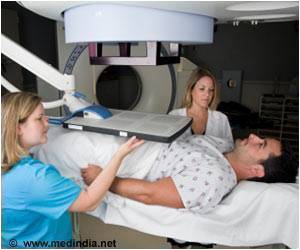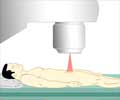Highlights
- The risk of prostate cancer and prostate cancer deaths is higher in tall and obese men
- Higher BMI increased the risk of high grade tumors and death from prostate cancers
- In older men, waist circumference is linked with increased risk of prostate cancer death and high grade disease
Increased risk of high grade tumors and death from prostate cancer were found to be linked with higher BMI. In obese adults, measuring waist circumference is a more accurate indicator of prostate cancer risk than measuring BMI.
In this study, researchers found that the waist circumference was linked with an 18 percent increased risk of prostate cancer death and with every ten centimeters (3.9 inches) increase in waist circumference, risk of high grade cancer was increased by 13 percent.
Dr Aurora Perez-Cornago, the lead author said: "The finding of high risk in taller men may provide insights into the mechanisms underlying prostate cancer development, for example related to early nutrition and growth. We also found that a healthy body weight is associated with a reduced risk of high grade prostate cancer and death from prostate cancer years later. The observed links with obesity may be due to changes in hormone levels in obese men, which in turn may increase the risk of aggressive prostate cancer. However, the difference in prostate cancer may also be partly due to differences in prostate cancer detection in men with obesity. "
This study is the first to investigate the difference between high grade and advanced stage tumors. Alongside, the links between height and obesity and prostate cancer were also investigated.
Further Research Required To Understand the Differences in Risk
The data from European Prospective Investigation into Cancer and Nutrition (EPIC) was used by the researchers. The data collected included a European cohort of 141,896 men from eight countries, such as Denmark, Italy, the Netherlands, Spain, Sweden, the UK, Germany and Greece. There were about 7,024 incident prostate cancers, 726 high-grade prostate cancers and about 1,388 advanced stage prostate cancers and 934 prostate cancer deaths.
BMI as a measure of overweight and obesity in older adults aged 52 and above may be less sensitive than the younger cohorts, which may have led to underestimate the prevalence of obesity.
Nevertheless, waist circumference was found to be associated with increased risk of prostate cancer death and high grade disease in older adults.
Further research is required to understand whether the higher risk of aggressive prostate cancer in obese men is due to an increased risk of developing aggressive forms or due to differences in prostate cancer detection.
What is Prostate Cancer?
Prostate cancer is the development of cancer in the prostate gland of the male reproductive system and is the most common non-skin cancer. Most cancers are slow growing, and may spread from the prostate to other parts of the body. The older you are, the more likely you are to be at risk for developing prostate cancer, and the chances are that 1 in 8 men will be diagnosed with prostate cancer at some point in their lives.
Reference:
- Aurora Perez-Cornago et al. Tall height and obesity are associated with an increased risk of aggressive prostate cancer: results from the EPIC cohort study. BMC Medicine DOI: 10.1186/s12916-017-0876-7
Source-Medindia















